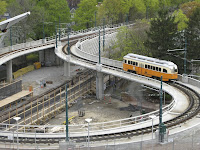
DORCHESTER – Last week, state representative Linda Dorcena Forry proposed an amendment to the Massachusetts Immigrant and Refugee Advocacy Coalition’s Citizenship Services for New Americans program, which would increase the state budget by $1.25 million in fiscal year 2009.
The proposal, of $750,000 more than this fiscal year, will provide money to community-based organizations such as the Vietnamese American Civic Association and other immigrant naturalization services.

“There is a huge need and there are a couple of areas that are not even served [including] the Cape, Leominster and Fitchburg,” said Carly Burton, a policy associate at the Massachusetts Immigrant and Refugee Advocacy Coalition.
Burton said many organizations have barely received enough money to fund the programs they offer, such as language courses, health services and assisting people in becoming citizens.
The money is given to the Massachusetts Office for Refugees and Immigrants and is filtered to 13 groups statewide that provide citizenship services, according to a Massachusetts Immigrant and Refugee Advocacy Coalition fact-sheet.
The Citizenship for New Americans program assists immigrants and refugees assimilate to the country. Burton said refugees generally have an easier time getting green cards, but they often have a difficult time adjusting psychologically and culturally.
Emmet Folgert, community activist and director of the Dorchester Youth Collaborative, has witnessed adjustment difficulties in the lives of young immigrants, particularly among the Vietnamese and Cape Verdean population.
Folgert said a lot of the violence in Dorchester is among immigrant groups; those who have police records are often not likely to be granted citizenship.
“There are many opportunities to be involved in crime,” Folgert said. “It’s a real pressure that folks live with.”














